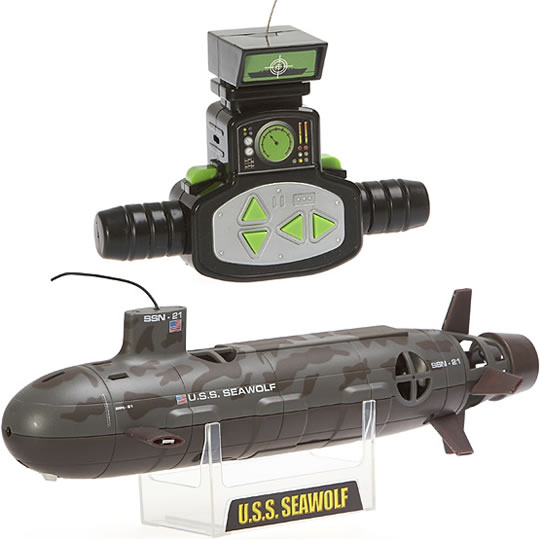Week 3 Journal Entry
An ugly truth.
When Professor Baker told us to learn and write more about the technology we started with last week I didn’t anticipate a problem, after all I choose two projects I am genuinely interested in. But as I set out to actually DO the assignment I quickly realized that I am WAY out of my league. Do you want to know why? Because I don’t know ANYTHING about submarines, and that is what I really want to make – a remote controlled submarine.
This one is my favorite, but that in no way shape or form means it is the best one for me to use with my project – it is a very consumer oriented product:
This other style is better geared toward research and being adapted.
Here are some great examples of the kind of stuff I have to learn about and then decide:
- Will my sub use ballast to control buoyancy or will it use planes to “push” it under the surface? Or should it use a back flow preventer valve? (Which basically triggers a surface response once its tanks get to a predetermined amount of pressure). This option is called snorkeling.
- Will it follow a predetermined course and only rely on its remote control for corrections and emergencies or should I assume that the sub is going to stay close to the surface and remain in contact for the duration of its mission?
- How powerful an engine does it need?
- What type of power supply will best suit my needs?
- How powerful a homing device?
- How powerful a transmitter?
- How should I seal the components I will need constant access to? Because I will be modifying a product already in existence this is very important – I don’t want to fry the device while I am still working the kinks out. They are expensive
I found two organizations that hold annual student competitions in underwater robotics.
http://www.materover.org/main/index.php
The MATE competition (Marine Advanced Technology Education) focuses more on the mechanical aspects of underwater vehicles and scientific missions, whereas the goals of the Robosub (part of the Association for Unmanned Vehicle Systems International) competition trend towards military applications with inertial navigation, sonar, and computer vision. Both competitions involve robots swimming with divers so safety is a driving consideration. MATE has stringent requirements about vehicle power supply from tethers. Robosub allows the use of onboard batteries which can reduce the cost of propulsion systems, however as a consequence of the sophistication of internal electronics, AUVs imply cost barriers in computer processing electronics and sensors.
I will update the group on my learning curve next week.





